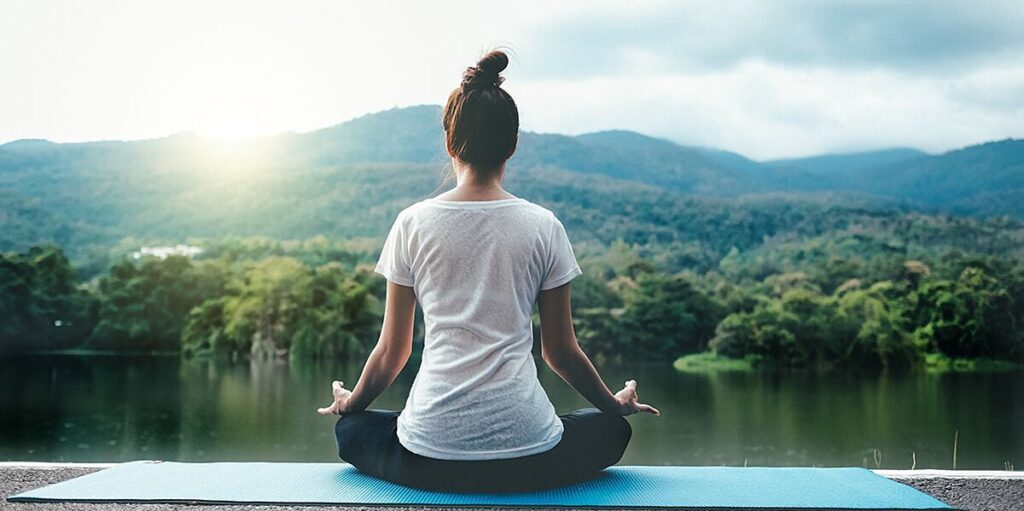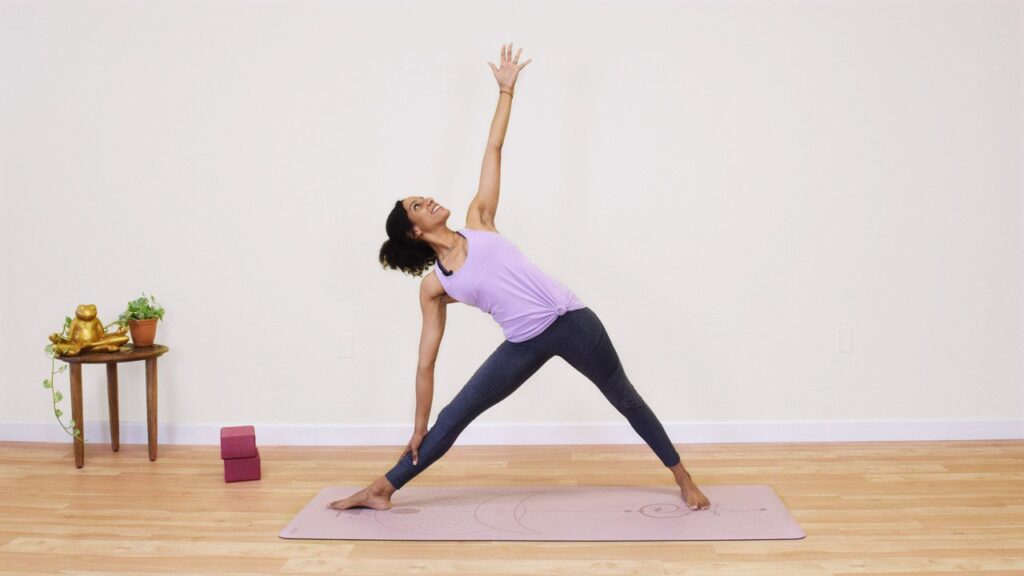YOGA HAS MORE BENEFITS THAN YOU THINK!
The history of yoga has several places of uncertainty because it is orally transmitted and taught through sacred texts. The first yoga writings were transcribed on palm leaves that were damaged easily, lost, or destroyed.
The development of yoga is traced back to more than 5,000 years, but many researchers strongly believe that it is 10,000 years old. The long and rich history of yoga is divided into four crucial parts: innovation, practice, and development.

PRE-CLASSICAL YOGA
The beginnings of yoga were first developed in the Indus-Sarasvati civilization in Northern India over 5,000 years ago. “Yoga” was first mentioned in the old sacred texts, the Rig Veda. These were texts containing mantras, songs, and rituals used by the Brahmans and the Vedic priests. Yoga was then gradually developed and refined through the Rishis and the Brahmans. They documented the practices and beliefs into a considerable work that carried over 200 scriptures, called ‘Upanishads. The most significant renowned Yoga scripture is the Bhagavad – Gita, which was composed in 500 BCE. The Upanishads took the idea of ritual sacrifice from the Vedas. They internalized it, teaching ego sacrifice through self-knowledge (karma yoga) and wisdom (jnana yoga). (Burgin, 2000-2021)
CLASSICAL YOGA
In the pre-classical stage, yoga carried various ideas, techniques, and beliefs that contradicted each other. The classical period was defined by Patanjali’s Yoga – Sutras, the first systematic presentation of yoga. These were written at some time in the second century. The text describes the path of Raja Yoga and is often called “classical yoga.” Patanjali organized the yoga practice into eight-limbed tracks that contained the stages and the steps towards enlightenment. Patanjali is considered the Yoga father, and his Yoga sutras are still strongly influenced in most modern yoga styles.
Therefore, in the 1800s and early 19oos, yoga masters started to travel to the West to attract followers’ attention. This began in 1893 at the Parliament of Religions in Chicago, when the Swami Vivekananda impressed the attendees with the lectures on yoga. Hatha Yoga was then strongly promoted in India with the work of T.Krishnamacharya. He produced three students that continued his legacy and increased the popularity of Hatha Yoga. The importance of Yoga in the West continued until Indra Devi opened her first yoga studio in Hollywood in 1947. Many more western and Indian teachers later became pioneers, making Hatha Yoga popular and gaining more followers. Hatha Yoga now has several different schools and styles that all emphasize various aspects of the practice.
WHY IS YOGA ESSENTIAL FOR EVERYONE?
It is now the time to roll out your yoga mat and examine the combination of mental and physical exercises that have hooked practitioners for thousands of years around the world. The beauty of yoga is that you don’t have to be a professional to gain its benefits. Therefore, if you are young or old, fit or overweight, yoga has the power to calm the mind and strengthen the body. So, don’t be intimidated by the yoga terminology, the complicated poses, or the fancy yoga studios. Yoga is for all of you!

TEN CRUCIAL YOGA POSES YOU SHOULD LEARN
The primary building blocks for yoga are its poses. These are the best yoga poses that you can learn to build regular yoga practices.
These ten poses are a complete guide for a yoga workout. You have to move slowly between each pose while remembering to breathe as you move. Pausing after any pose, you find difficult, especially when you are short of breath, and start breathing normally again. The primary goal is to hold each pose for a few minutes before moving on to the next pose.
- Child’s Pose
This is a calming pose that is a good default pause position. You can practice this pose when at rest and focus on it before moving on to another posture. You can gently stretch your lower back, thighs, hips, knees, and ankles while relaxing your spine, neck, and shoulders.
Do it when you want to get a gentle stretch between the spine, hips, and neck.
Don’t do it if you have any injury in the knee or ankle. You can place a towel under your ankles if they feel uncomfortable.
Modify. You can rest your head on a block or a cushion or place a rolled towel under your ankles if they feel uncomfortable.
Be mindful and focus on relaxing the muscles of the lower back and spine as you breathe.
- Downward facing dog
This pose strengthens the arms, back, and shoulders while also strengthening the hamstrings, arches of the feet, and calves. It can also help in relieving back pain
Do it to help relieve back pain.
Don’t do it if you have carpal tunnel syndrome or wrist problems, high blood pressure, or any stages of pregnancy.
Modify, you can apply this pose with your elbows on the ground while taking the weight off your wrists, and you can also use blocks under your hands, which can make you feel more comfortable.
Be mindful, focus on distributing the weight equally through the palms and lift the hips up and back, away from your shoulders.
- Plank Pose
This is a commonly seen exercise. The plank pose helps in building strength in the core, legs, shoulders, and arms.
Do it. This pose is good if you look to tone your abs and build strength in the upper body.
Skip it if you have struggled with carpal tunnel syndrome because it can hurt your wrists. It is not advised to practice this pose if you have low back pain.
Modify this pose by placing your knees on the floor.
Be mindful as you plank and imagine the back of your neck and your spine at the same length.
- Four–limbed staff pose
A plank pose follows this push-up variation in a usual yoga sequence known as “sun salutation.” It is a great pose to learn if you aim to practice more advanced poses, like arm balances or inversions. This pose is similar to the plank and can strengthen the arms and wrists while also toning the abdomen. It is not advised to do this pose if you struggle with carpal tunnel syndrome, shoulder injury, lower back pain, or pregnancy. It is a good idea to modify the pose by keeping the knees on the floor. You should press your palms into the floor and lift your shoulders away from the floor as you hold this pose.
- Cobra Pose
This is a back-bending pose that can help in strengthening the back muscles, increasing spinal flexibility and chest, abdomen and shoulders. This pose is excellent for strengthening the back. It is not advisable to pose this if you have neck or spine arthritis, carpal tunnel syndrome, or low back injury. Modify by simply lifting some inches without straightening your arms. Also, try to keep your navel drawing up and away from the floor as you hold this pose in position.
- Tree Pose
Beyond improving balance, this pose can also strengthen your ankles, thighs, spine, and calves. It is an excellent pose for posture and balance. You might have to skip this pose if you have low blood pressure or any other medical condition that can affect your balance. You can place one of your hands on a wall for support. It would be best if you also focused on your breathing as you hold this pose.
- Triangle Pose
This is an excellent part of yoga sequences that helps build strength in the legs and stretch the calves, hamstrings, groins, hips, spine, chest, and shoulders. It can also increase hip and neck mobility. This pose is excellent for building endurance and strength. You should avoid this pose if you are struggling with low blood pressure or a headache. You modify this pose by turning your head to gaze downwards into the final pose. Therefore, if you have neck problems, do not turn your head upwards. Look straight and keep both sides of the neck long. Keep lifting your raised arm upwards, as it helps in keeping the pose buoyant.
- Bridge Pose
This is a back-bending pose that can stretch the muscles of the chest, neck, and back, and it also can build strength in the hamstring muscles and the back. If you sit for long periods, this pose is very beneficial for you. You can modify this pose by placing a block between the thighs to help the feet and legs to stay in good alignment. You can also set a block under the pelvis if your lower back is hurting you. Try to keep your chest lifted and your sternum towards your chin while holding this pose.
- Corpse Pose
Yoga classes usually end with this pose because it allows a moment of relaxation. But, some people find it hard to stay still in this pose, but the more you practice it, the deeper you will sink into a relaxing and meditative state. (Couturier, 2016)
Furthermore, as we have seen, yoga is more than just a physical workout. Yoga is a complete mind and body exercise. Poses are specific practices combined with particular breathing techniques and meditation principles that are the building blocks of any yoga class. If a pose causes pain or is too hard to practice, many modifications can help students. The benefits of regular yoga practices are wide-ranging. In recent years, more research is examining the wide-ranging health of yoga benefits, such as:
- Relieve depression.
- Reduce stress.
- Reduce back pain.
- Strengthen back pain.
- Improve balance.
When you learn the yoga poses in a yoga class, you will be taught to notice your breath and how your body moves during the exercises. This is the foundation of a mind and body connection. A well-balanced series of yoga exercises can allow you to scan your whole body while also noticing how you feel as you move through the poses. Learn to be aware of the posture that you are practicing and taking the first step for self-improvements that will allow you to move quickly and feel better at all times!
If you or anyone you know is suffering from pain, call us today at (469) 545-9983.
